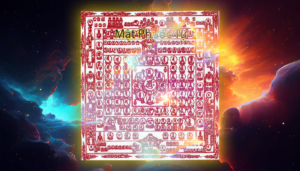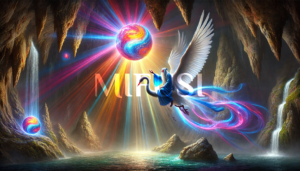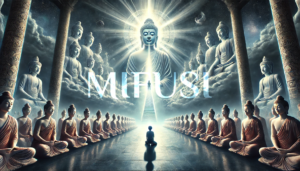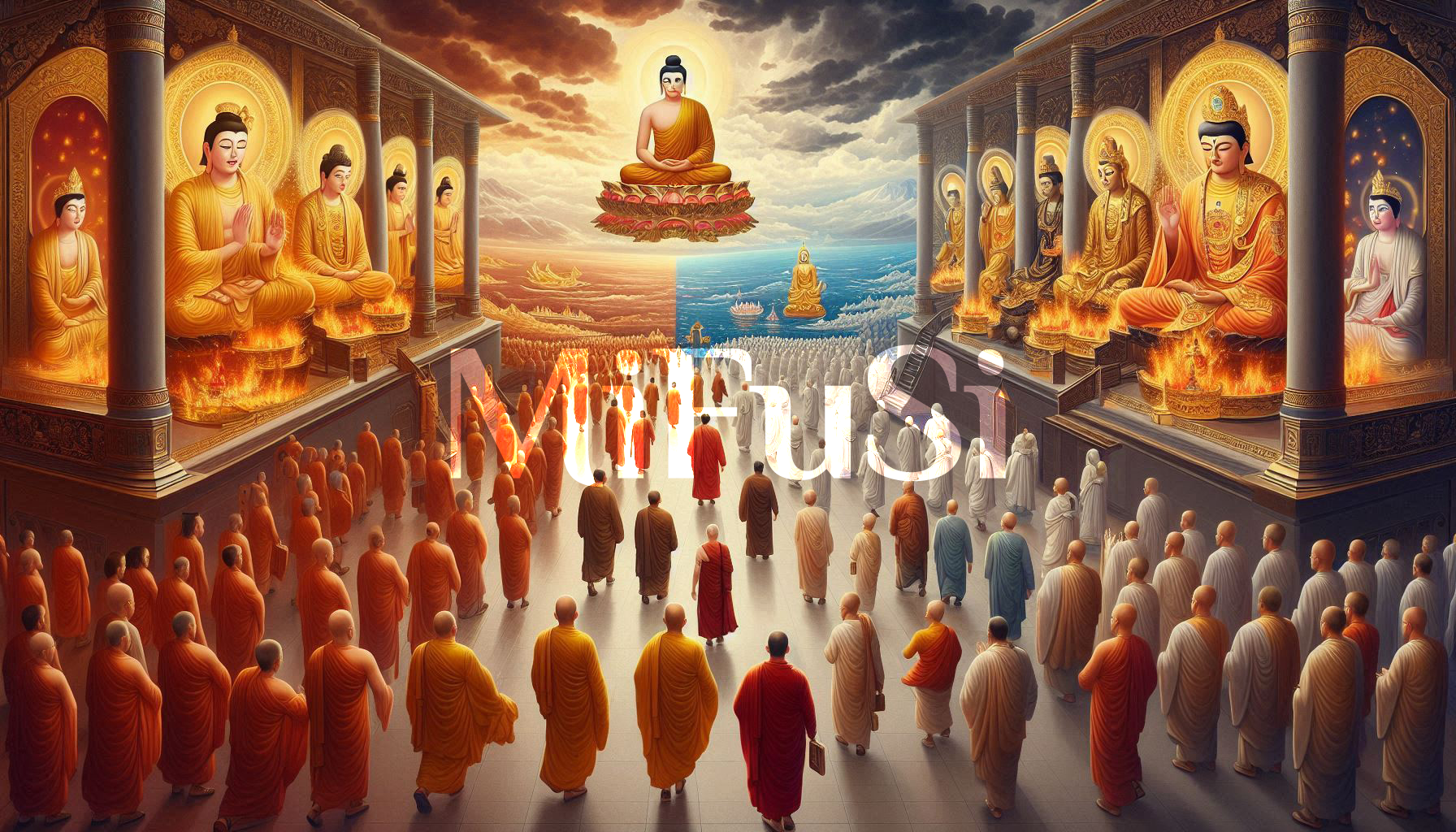Authenticity Versus Deception in mysticism
Thiệt – Giả – Cơ huyền by batnha on 05/16/2024, 13:57; translate by Akira
Authenticty Vs Deception – A test from Celestial Beings for mystic practitioners.
In life, opposites abound, making it challenging to distinguish between truth and falsehood. Genuine monks exist alongside imposters, and natural beauty coexists with artificial beauty. The complexities of life—its goods and bads, truths and lies, rights and wrongs—become entangled, causing confusion. Even discerning the visible can be difficult, let alone the invisible. The spiritual realm is rife with illusions, resembling a labyrinthine battlefield or an enigmatic forest.
Consider mystic practitioners who, during their spiritual practice, receive divine revelations. This presents a daunting test, as both genuine and fake revelations exist. Without sufficient wisdom, they may mistake false revelations for genuine ones and vice versa. To pass this test, mystic practitioner must understand oneself and one’s position. If they find themselves still entangled in concerns about livelihood, navigating through various life issues, and lacking societal status, they must recognize that their spiritual journey is only just beginning.
Mystic practitioners rely on invisible helpers, and if they unquestioningly believe the praise bestowed upon them by these invisible helpers, they risk falling into self-delusion. Even those deemed spiritually advanced and possessing mystical powers can be misled by invisible beings, let alone novice practitioners. By the time they comprehend the falsehood of fake revelations and the fallacy of the invisible’s words, it may already be too late.
Monks often prioritize matters related to false appearances of Buddha. So, when someone claims to have seen Buddha, they might be interpreted as having seen a ghost instead. Interestingly, when one claims to have seen a ghost, some monks attribute it to imagination rather than an actual ghost, while others acknowledge the sighting. It’s peculiar that seeing a ghost is simply that—seeing a ghost—yet seeing Buddha is also considered seeing a ghost. This paradox extends to Christianity as well. While priests do not see god or the holy spirits, yet when others do they’re often dismissed as having seen demons instead. Priests believe that demons can masquerade as God, and their powers are seen as comparable to those of God. Ultimately, the seemingly straightforward task of distinguishing between a ghost, Buddha, Satan, or God proves to be a perplexing challenge for religious figures. One might expect such learned individuals to have clarity on such matters, yet they continue to grapple with this fundamental question.
In reality, whether it’s a ghost or demon posing as a Buddha or God doesn’t truly matter. Such apparitions are celestial tests of one’s intelligence, ego, and virtue, meant to impart wisdom. If someone mistakes a false Buddha for the real one and follows it to do wrong, or if they encounter a genuine Buddha teaching them what’s right but refuse to believe, both scenarios lead to significant mistakes. Only through profound virtue and intelligence can one discern true from false, holy from unholy, and right from wrong.
Spiritual figures, like Buddhas, may adopt unexpected forms, such as appearing as demons, to impart important lessons, akin to how parents sometimes adopt strict approaches to teach their children valuable lessons. Similarly, spirits may present themselves as the Supreme Being in radiant forms, appealing to practitioners’ egos, much like parents praising their children’s minor achievements to boost their morale. However, this can create a delicate balance: Too much praise or indulgence may hinder spiritual growth, while too little may discourage progress. Novices in mysticism may find the truth about their abilities and flaws difficult to accept, just as children may struggle with constructive criticism. Yet, as practitioners advance and become more discerning, they develop the wisdom needed to navigate these complexities, distinguishing genuine spiritual guidance from deception.
To discern whether a monk is genuinely high in spiritual attainment or fake, one must reason with logic: Observe their life—whether it’s normal, peaceful, or marked by struggle. Death due to illness or natural causes is normal, but dying under unusual circumstances—such as accidents, homicide, or suicide—is not. Those who die tragically cannot be considered spiritually advanced; rather, they may carry heavy karmic burdens. Similarly, those who lack respect or affection in society cannot be esteemed in spirituality. A person’s spiritual state often mirrors their worldly condition. Those blessed with merit enjoy peaceful lives, transcending worldly worries both in life and in their spiritual practice.
Do people become wiser after death?
Answer: After death, individuals retain their characteristics from life. The adage “One who is wise in life remains enlightened after death” underscores that foolishness persists beyond the grave. Those lacking wisdom are vulnerable to deceit throughout their lives, whether by influential figures in politics, religion, or commerce, or by demons and malevolent spirits in the afterlife. When interacting with spirits, it’s essential to assess their intelligence to avoid being misled. Employing discernment is vital when heeding a medium’s words to differentiate between truth and falsehood.
Related Post

Chapter I: VI – HOMA (Part 6/6)
VI. HOMA (Goma, jap): Homa is the "Fire" ritual meditation. Originating in ancient India, it was later appropriated to Buddhist...

The Wish-Fulfillment Yantra Vision
The Wish-Fulfillment Yantra Vision Linh ảnh khi làm lễ thỉnh lá phép TCTĐ - by Tường Lãm - translated by...

Which Religion Reigns Supreme?
Which Religion Reigns Supreme? (Đạo Hay Nhất! by như-ý on Mon Feb 09, 2009 3:05 pm Translated by Xiaobaiyun.) The...

An Ascetic and the Dalai Lama
An Ascetic and the Dalai Lama (Excerpt from Alexandra David-Neel’s Magic and Mystery in Tibet, Dover Publications, Inc., 1971) Thubten...

Divine Visions from the Initiation Ceremony
Divine Visions from the Initiation Ceremony These are the 10 Divine acknowledgements during the Initiation Ceremony from various disciples' reports:...

WHY DIVINERS END UP POOR?
WHY DIVINERS END UP POOR? by Hữu-Không on 28 April 2013 - Translated by Huu Khong and edited by Rain9811...

Chapter II: III – BRIEF HISTORY OF SECRET BUDDHISM IN JAPAN
Four superior Buddhist priests and others had brought the theory and practice of Buddhism to Japan. From that time, Secret...

Invisible Deities of Career
Invisible Deities of Career (Tổ vô hình các ngành nghề submitted by Khánh-am on 24 Mar 2009 - translated by...
